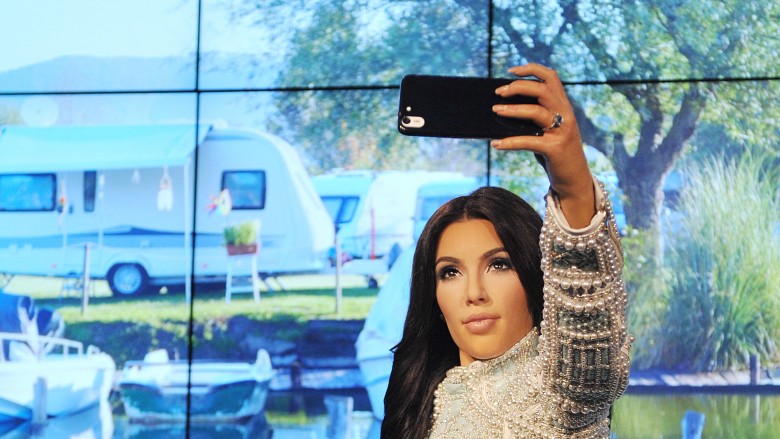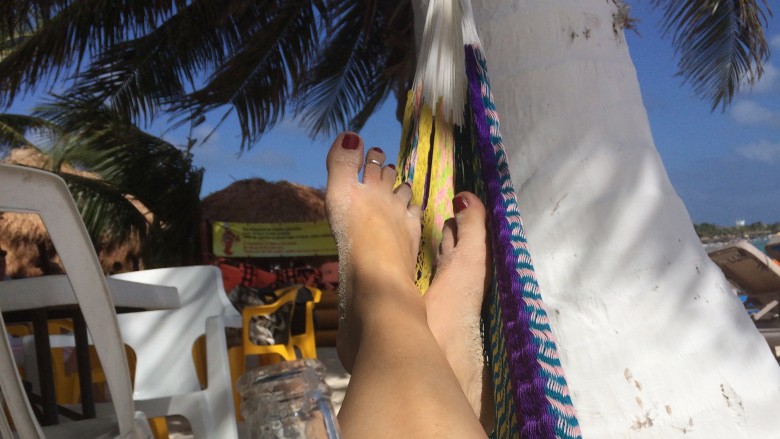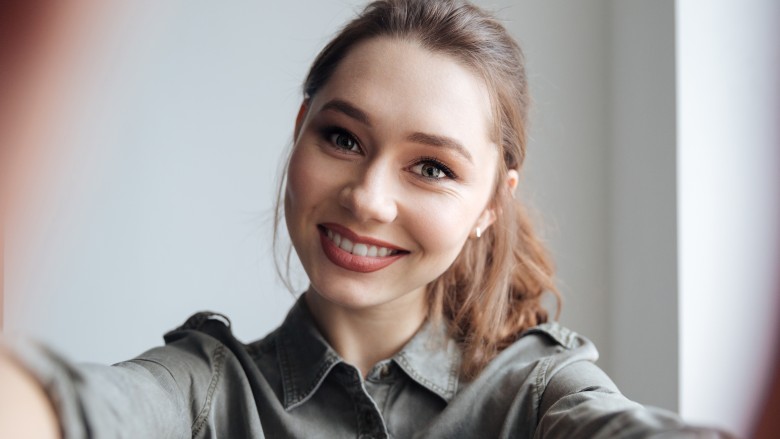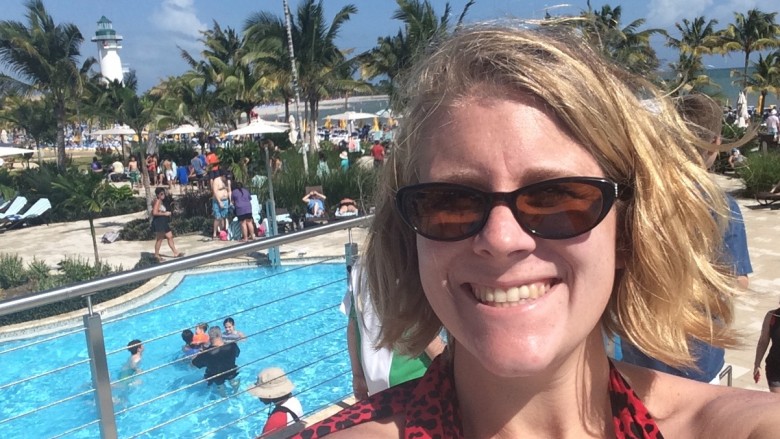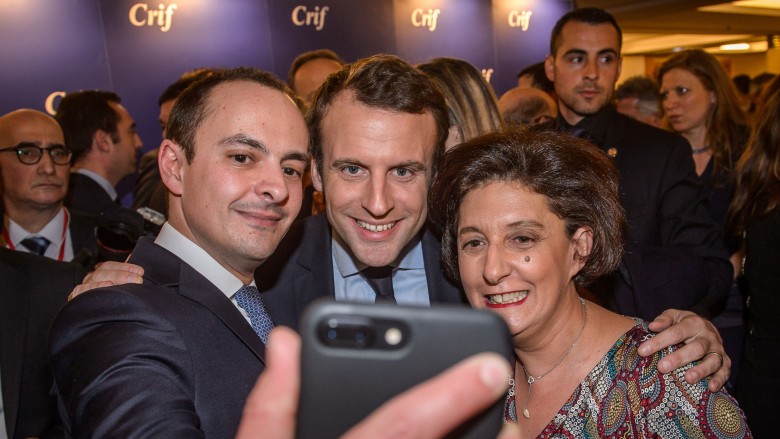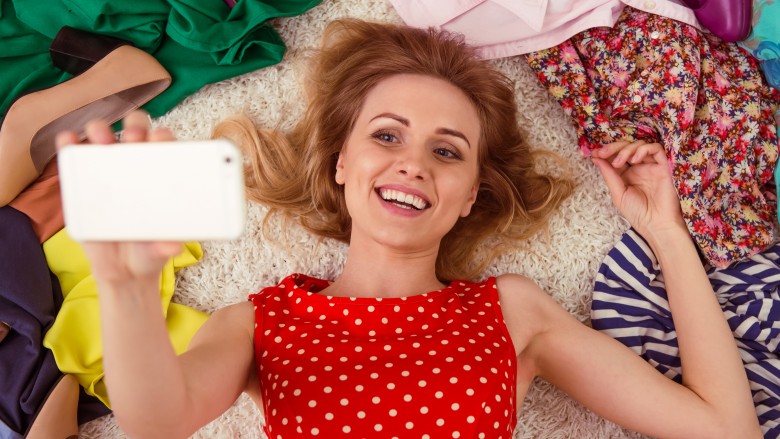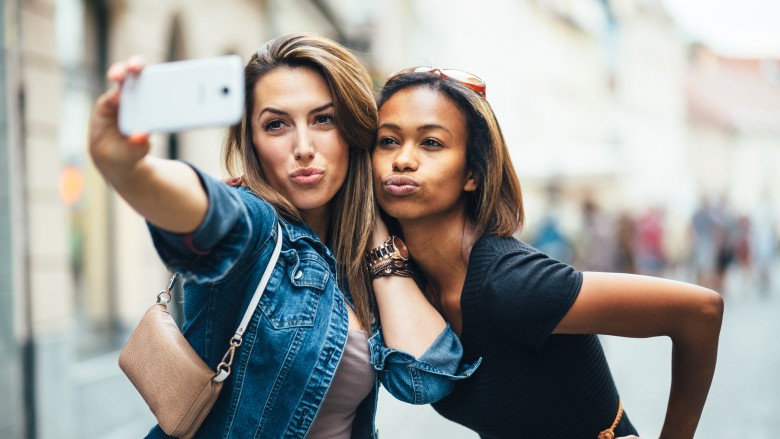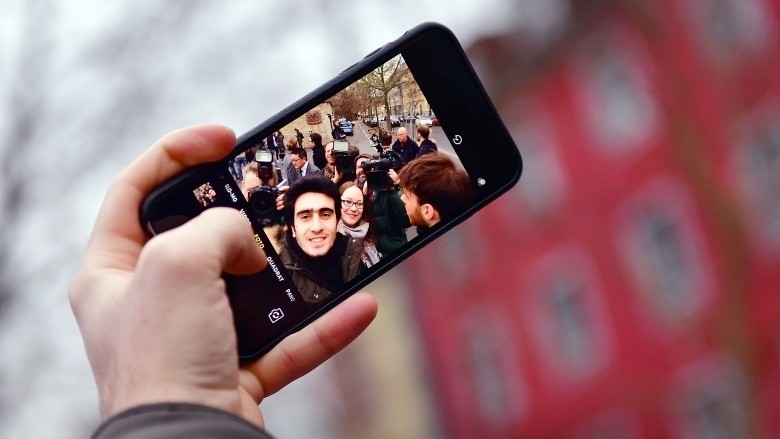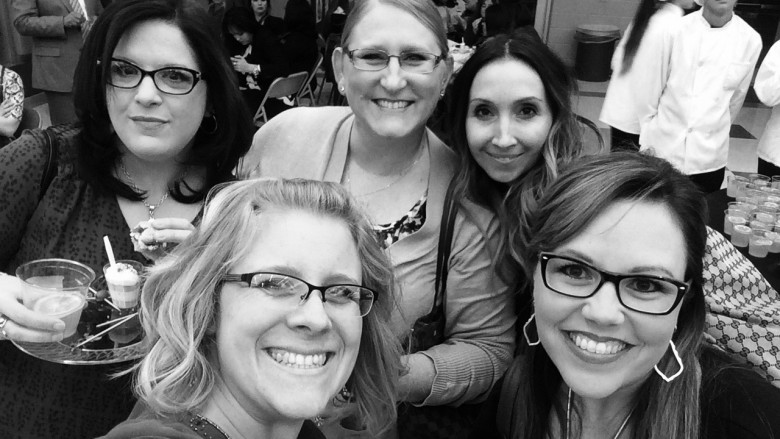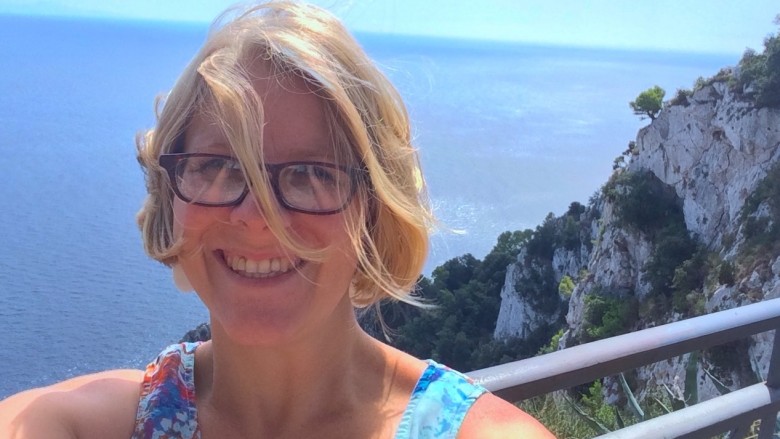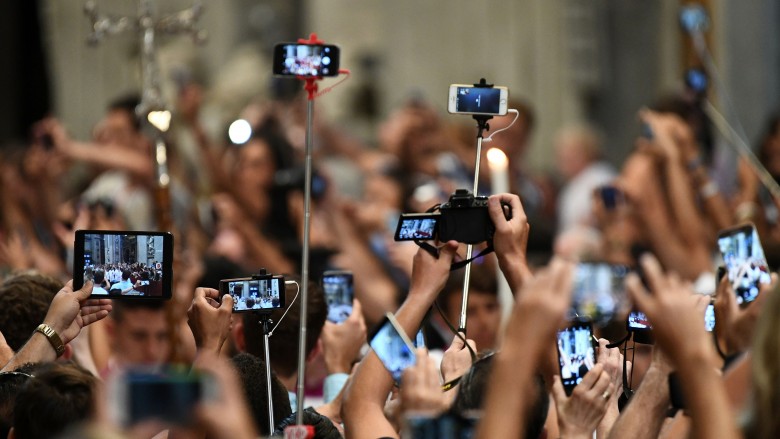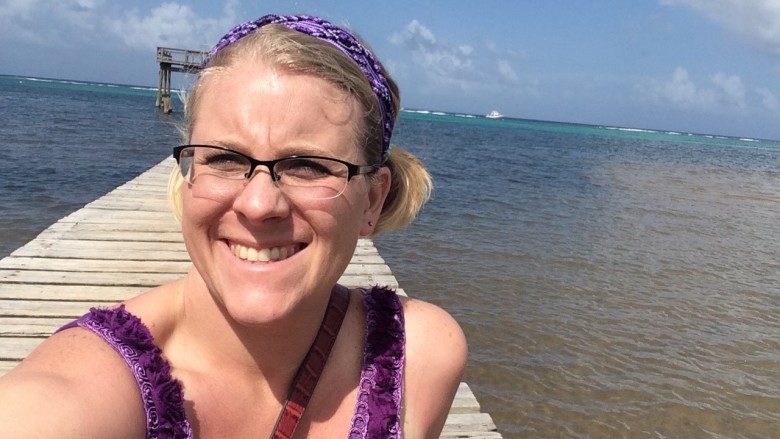Hacks For Better Selfies
Although the term "selfie" was named Oxford's Dictionary Word of The Year in 2013, the idea of the self portrait is not a new concept. Artists have been rendering self portraits for centuries before the modern smartphone came onto the scene, but today's modern selfie is meant to serve as more of a quick shout out than a lasting piece of art. But what makes a great selfie? Instagram, SnapChat, and Facebook users have their own opinions, but even the scientific community has weighed in on what makes a selfie successful. I asked photographer Amber Wallace for her professional tips for the modern self portrait. So here are a few hacks for upping your selfie game.
Chin down, camera up
Love her or hate her, Kim Kardashian is arguably the selfie-queen. There's even a wax figure of Kardashian mid-selfie at Madame Tussauds. In an interview with Marie Claire, Kardashian said her favorite selfie angle is chin down, camera up. Holding the camera too low highlights a nice double chin, and pointing the chin up shows the world the inner-workings of your nasal passage. If that's not the look you're going for remember Kardashian's selfie mantra: chin down, camera up.
Wallace said that angle works for Kardashian because her face is relatively thin, but your perfect angle depends on what your face structure is. Play around with angles and heights of your camera to find your own sweet spot.
Move beyond your mug
Remember that your face doesn't define you. The point of a selfie is to share a part of yourself with the world, so branch out. New pair of shoes? Shoot your feet. Ran over 20,000 steps? Show us the fitness tracker on your wrist. A selfie can tell a story about you without your face even in it. While having a relaxing moment at the beach I realized that my sand-covered toes and a hammock told a better story than my duck face near the water.
"When you're looking at your camera you're not really in the moment," Wallace said. "So your face isn't always the best way to capture what's going on." A selfie isn't just your face. A selfie is about you. Even when photographing her clients, Wallace tries to capture candid moments and smaller details.
Frame it out
If you are trying to convey your feelings through facial expressions, bring the shot in tight around your face, Wallace said. Minimize distracting backgrounds by bringing the focus to your eyes. But don't hold the camera too close, since that will bring the focus to whatever is closest to the camera, and in this case it's your nose. Instead zoom in just enough to frame the shot, but not so much that you reduce the quality of the photo.
"Because cell phones don't allow you to capture the depth of field like a good camera, zooming in slightly and framing the shot will give you a similar effect," Wallace said. It also allows people who are self-conscious about their body to concentrate more on their face and pose in a more flattering fashion that might look weird zoomed out. But framing it in tight gives that flattering facial selfie.
Divide and conquer
Centering your face in the middle of the frame can give a bit of a mug-shot vibe to your selfie. Wallace said if that's not your goal, try using the basic photography rule of thirds. This trick essentially divides the frame into a grid with three equal parts vertically and three equal parts horizontally. Position your face on the right or left of the frame in the top corner with your eyes a third of the way down from the top and off center just a bit. This composition allows for the focus to simultaneously capture you and your surroundings.
"The rule of thirds is generally more appealing to the viewers eye because it allows your eye to circulate around the photograph and back to the subject," she said.
Selfie-ception
Sometimes the act of taking a selfie can tell its own story. Try having someone else take a photo of you taking a photo of you. A selfie of a selfie. Celebrities are experts at the selfie-inception, although Wallace said she finds the idea of taking a photo of a selfie kind of awkward if the subject isn't someone with notoriety.
Crop 'til you drop
One way to go viral is to snap a selfie with an interesting background. Just make sure it's interesting for the right reasons. One girl's selfie was shared around the internet because she forgot to crop out some of the dirty details around her. Keep it simple, and be aware of your surroundings. No one's going to be interested in your face if they can spot a rat feasting on garbage over your shoulder.
Some documentary photographers would say not to crop, Wallace said. But for a run-of-the-mill selfie a little creative cropping is fine. Some people even crop in tight around one eye in order to illustrate something in the background, even if it is something a little crazy. Again though, know the intent of your selfie when snapping that shot.
Do the duck face?
Unless you are actually a duck, no. Just No.
Pump up the volume
Instead of trying to awkwardly contort your fingers to both hold your phone and hit the shutter button on the screen, try using the volume buttons on the side of the phone. If that doesn't do it, try a device called the PopSocket. It's a phone accessory that doubles as a grip and a stand.
Wallace said sometimes she uses her selfie-taking arm in the photo to frame out the shot and use "leading lines" in order to draw attention to the face.
Filter with caution
There are plenty of beautifying selfie filters on SnapChat and Instagram, and there's certainly no shortage of selfie apps with fabulous little widgets for perfecting your picture. But don't overdo it. Using the wrong filter or even too many filters gives your photos an inauthentic quality that even your grandmother can see through. Have fun with filters, but don't underestimate your own natural beauty. A simple black and white filter can invoke emotion and bring the focus to the subject in an artsy and retro kind of way.
"From a photographers standpoint I'm not a fan of filters because it's not an authentic representation of what you're taking a picture of," Wallace said. There are some subdued filters that are okay, but don't ever slap a filter on a professional picture from a photographer, she said. It negates their artistic efforts and doesn't accurately represent the photographer's work.
Lights, camera, selfie
"Lighting is absolutely key in photography," Wallace said. "I base everything I do off of light. Photographers are light chasers." And lighting can make or break a selfie. Wallace said natural lighting is always best, as fluorescent lighting can be extremely harsh on a person's complexion. Inside near a window, or outside in the sun is usually the way to go.
Don't try to get sun beaming directly at you though, Wallace said. Indirect, flat, even light is best. And unless you're wearing sunglasses don't face the light directly, otherwise you just end up with a squinty-eyed shot. However if the light is at your back you might get some dark shadows you don't want. Wallace said cell phones aren't able to compensate for light like a good camera, so try and find a shady area with natural light. Then rotate and find what angles are most flattering.
There's a "magic hour" or two, just after sunrise and just before sunset where the sun gives off a dreamy glow. Wallace said if natural light isn't an option, hold a white napkin or piece of paper under your face to soften the harsh bright tones.
To stick or not to stick
Selfie sticks are an easy way to take in more of your surroundings and get that perfect selfie angle, but use them with caution and be considerate. Some theme parks now ban selfie sticks because guests weren't being very courteous and their selfie sticks were turning into weapons of mass annoyance.
Conde Nast Traveler reported that in 2015 there were more selfie related deaths than shark attacks. If you choose to use a selfie stick just be aware of others, try not to invade anyone's personal space and watch what you're doing. No selfie is that important.
Happy snapping
The act of taking a selfie is narcissistic at its roots. You want people to see you, and to know something about you. Think about what you're trying to say with your selfie, and make sure to use your photo to tell your story.
Wallace said selfies might be annoying, but as a photographer it's nice to have a way to actually be in the picture rather than just taking all of them. And remember, you're no Rembrandt. Your canvas is digital, so you can take as many do-overs as you want.

